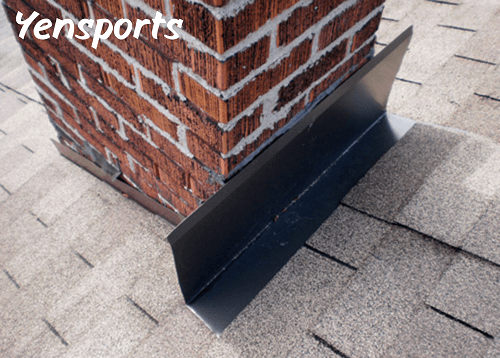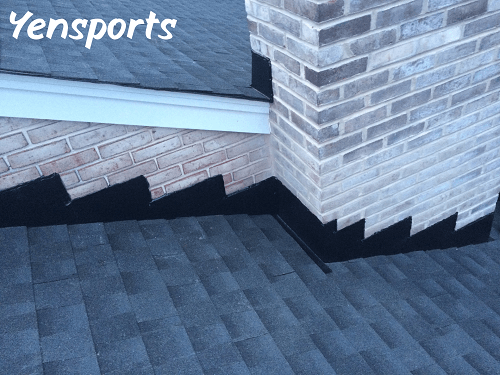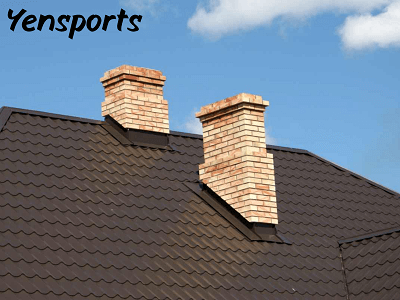Important Protection for Your Roof and Chimney
Chimney Cricket:
Chimney Cricket is one of the most prominent elements of most homes in terms of functionality and style. However, over time, chimneys become susceptible to water damage, which can lead to costly repairs. Chimney flashing is one of the important components that prevents water from entering the chimney. Chimney Cricket, we will discuss what chimney insulation is, its importance, how it is installed, and some frequently asked questions about it.

What is Chimney Cricket Flashing?
Chimney Cricket:
Roof flashing refers to the placement of a specific type behind chimneys through which water is directed away from the structural area. In other words, it is a divergence that functions as a “cricket” to prevent rainwater from collecting at the bottom of the chimney whenever it reaches the roof structure since it can cause leaks rust, and other manifestations of water damage that threaten your chimney and the roof simultaneously.
Chimney Cricket:
This is an angular triangular structure, usually made of sheet metal, mounted on the windward side of the chimney, where water tends to collect. Flashing refers to metal sheets applied to the roof, chimney, joints, and seams to cover them and prevent leaks. This is one of those things that cannot be ignored, especially on chimneys built in rainy regions or under heavy snowfall, because when water must flow away, the problem becomes visible.
Why is Chimney Cricket Flashing Important?
Chimney Cricket:
Helps Prevent Water Damage: The most important benefit is the prevention of water pooling when collected by the cricket. Where this cricket does not exist, there is an easy path inside, allowing water to seep through the chimney structure – causing rust, decay, and the costs of repair for chimneys.
Chimney Cricket:
- Extends Lifespan of the Roof and Chimney: It protects the roof and chimney by diverting water from sensitive areas, thus extending their lifespan. Premature wearing out of the roof or, worse, a chimney might occur in case the water seepage would have caused structural damage without proper flashing.
- Prevents Mold and Mildew: In the case of water exposure over time, mold and mildew might grow in the attic or walls surrounding the chimney. This can become a serious health hazard to inhabitants and expensive remediation efforts. Chimney cricket flashing prevents such issues by diverting moisture.
- Improves Roof Aesthetics: Although primarily functional, chimney cricket flashing adds to the aesthetic appeal of the roof. A good cricket installation gives the roofline a finished, clean appearance and helps maintain the roof’s integrity.
How to Install Chimney Cricket Flashing?
Chimney Cricket:

Installation of cricket flashing requires skill and experience as it involves working with both roofing materials and chimney structures. Here is a general overview of how the installation process works:
Chimney Cricket:
- Assess the Chimney and Roof: A professional roofing contractor will inspect your chimney and the surrounding roof area to determine whether a cricket is necessary. Crickets are usually required for chimneys larger than 30 inches in width because these chimneys tend to collect water more easily.
- Design and Fabrication: The cricket is designed according to the size of the chimney and the slope of the roof. It is made of galvanized steel, copper, or aluminum. The slope of the roof shapes the cricket, and it’s installed right behind the chimney.
- Installation of flashing: After the cricket is in place, flashing is installed around the chimney and along the seams between the roof and the cricket. The flashing will create a watertight seal so that no water leaks into the roof or the chimney.
When installed, the flashing is sealed, usually with roofing cement or silicone to make sure it is airtight. A test by the contractor may also be performed to test its functionality in diverting water away from the chimney.
FAQs for Chimney Cricket Flashing:
Chimney Cricket:
1. Do all chimneys need a cricket?
Not all chimneys require a cricket. In general, wider chimneys greater than 30 inches or those exposed to significant rainfall or snow may require a cricket. A professional roofer will inspect your chimney and roof to determine if a cricket is needed.
2 . What materials are used for cricket flashing?
Common materials used for chimney cricket flashing include galvanized steel, aluminum, and copper. These metals are durable, resistant to weather, ng and long-lasting protection against water intrusion.
3. How often should I inspect my cricket flashing?
You should inspect your flashing once a year, especially after extreme weather conditions such as heavy rain or snow. This will ensure that you catch any damage early and prevent water intrusion.
4. Can I install chimney cricket flashing myself?
Yes, you can do so, but it’s recommended to hire a professional roofer or a chimney specialist. Proper installation demands knowledge of roofing and the techniques for flashing along with the structure of the chimney to ensure that the cricket works effectively.
5. What happens if chimney cricket flashing isn’t installed?
Without an installed chimney, water can collect in the base of the chimney and lead to leaks. Eventually, this can cause problems with water damage to your roof, chimney, or even inside your home. Mold and mildew might grow, compromising the structural integrity of your home.
Conclusion:
Chimney Cricket:

Chimney flashing is a very important part of the functioning of a roof and chimney system. It prevents water from entering the base of the chimney, which would otherwise damage the chimney and roof. Whether you live in an area with a lot of rainfall or simply want to ensure the longevity of your roof and chimney, installing flashing is an investment that can save you significant repair costs down the road. Regular inspections and maintenance are key to ensuring that your flashing continues to effectively protect your home.

